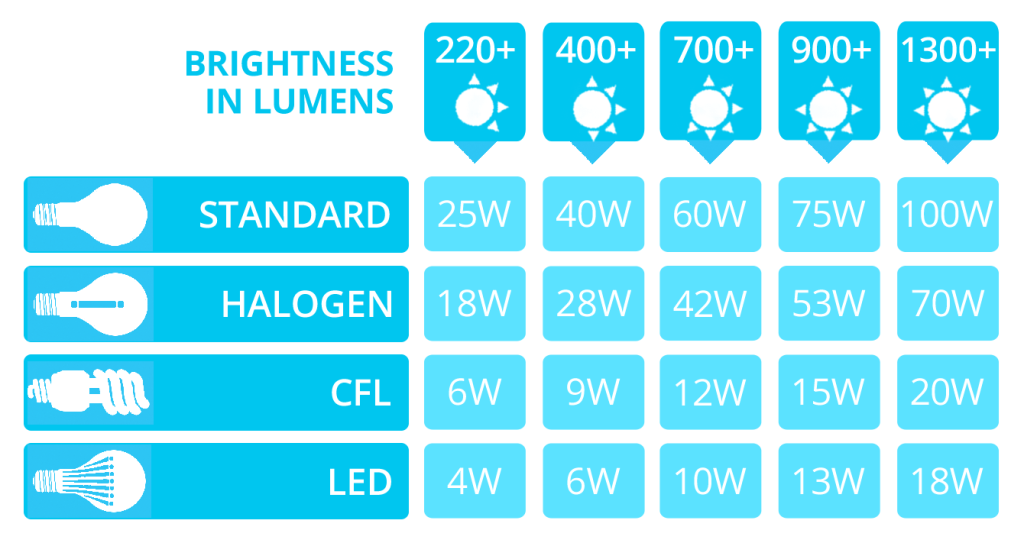When it comes to lighting, it’s important to understand the units of measurement used to describe the brightness and efficiency of a light source. Two common units of measurement are lumens and watts. Understanding the relationship between lumens and watts can help you make informed decisions when selecting lighting for your home or business.
In this article, we will delve into the concepts of lumens and watts and explain how to convert between the two units of measurement. We will also discuss some important considerations when choosing lighting based on lumens and watts.
Lumen to Watt Calculator
Watts:
Convert Lumen to Watt
When it comes to old-school light sources like incandescent bulbs or halogen lamps, it was as easy as picking your poison by just looking at the wattage. But with LED lamps, it’s not that simple. Sure, you’ll see the power consumption in watts, but that’s just the tip of the iceberg. Different components in various LED lamps lead to varying brightness with the same power consumption.
For example, a 5W LED lamp of type A can be a shining star, while another 5W LED lamp of type B can be a dim bulb. To truly compare LED lamps, you gotta check out their lumens. So, don’t get blinded by the wattage, check the lumens.
What are Lumens?
Lumens (lm) are a unit of measurement that describes the total amount of light emitted by a light source. More specifically, lumens measure the perceived brightness of a light source to the human eye.
For example, a light bulb with a higher lumen rating will appear brighter to the human eye than a light bulb with a lower lumen rating, even if both bulbs have the same wattage. This is because lumens measure the amount of light that is actually visible to the human eye, rather than the amount of electricity used to produce the light
What is Watt?
Watt (W) is a unit of power that measures the amount of electricity consumed by a device or appliance. In the case of light bulbs, watts measure the amount of electricity used to produce light.
For example, a light bulb with a higher wattage will typically use more electricity than a light bulb with a lower wattage. This means that a bulb with a higher wattage may have a higher energy cost to operate, even if it has the same lumen rating as a lower-wattage bulb.
Converting Lumens to Watts

Now that we’ve explained the concepts of the lumen to watt, let’s discuss how to convert between the two units of measurement.
To convert lumens to watts, you will need to know the efficiency of the light source in question. The efficiency of a light source is measured in lumens per watt (lm/W), which describes the number of lumens produced per watt of electricity consumed.
For example, if a light bulb has an efficiency of 80 lm/W, this means that it produces 80 lumens of light for every watt of electricity it consumes.
To convert lumens to watts, you can use the following formula:
watts = lumens/efficiency
For example, if you have a light bulb with a lumen rating of 800 and an efficiency of 80 lm/W, you can calculate the wattage as follows:
watts = 800 lumens / 80 lm/W = 10 watts
Final Words
Understanding the concepts of conversion of the lumen to watt is important when selecting lighting for your home or business. Lumens measure the perceived brightness of a light source to the human eye, while watts measure the amount of electricity used to produce light. To convert between lumens and watts, you will need to know the efficiency of the light source in question, measured in lumens per watt.
When selecting lighting, it’s important to consider both the lumen rating and wattage of the light bulbs you choose, as well as the energy efficiency, brightness, and light quality of the light source. By taking these factors into account, you can choose lighting that is both effective and energy-efficient for your specific needs.
